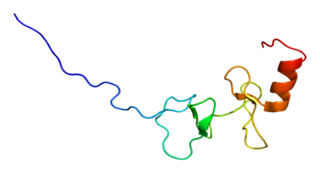| FN3K | |||||||||||||||||||||||||||||||||||||||||||||||||||
|---|---|---|---|---|---|---|---|---|---|---|---|---|---|---|---|---|---|---|---|---|---|---|---|---|---|---|---|---|---|---|---|---|---|---|---|---|---|---|---|---|---|---|---|---|---|---|---|---|---|---|---|
| Identifiers | |||||||||||||||||||||||||||||||||||||||||||||||||||
| Aliases | FN3K , fructosamine 3 kinase | ||||||||||||||||||||||||||||||||||||||||||||||||||
| External IDs | OMIM: 608425 MGI: 1926834 HomoloGene: 23336 GeneCards: FN3K | ||||||||||||||||||||||||||||||||||||||||||||||||||
| |||||||||||||||||||||||||||||||||||||||||||||||||||
| |||||||||||||||||||||||||||||||||||||||||||||||||||
| |||||||||||||||||||||||||||||||||||||||||||||||||||
| |||||||||||||||||||||||||||||||||||||||||||||||||||
| |||||||||||||||||||||||||||||||||||||||||||||||||||
| Wikidata | |||||||||||||||||||||||||||||||||||||||||||||||||||
| |||||||||||||||||||||||||||||||||||||||||||||||||||
Fructosamine-3-kinase is an enzyme that in humans is encoded by the FN3K gene. [5] [6] [7]
| FN3K | |||||||||||||||||||||||||||||||||||||||||||||||||||
|---|---|---|---|---|---|---|---|---|---|---|---|---|---|---|---|---|---|---|---|---|---|---|---|---|---|---|---|---|---|---|---|---|---|---|---|---|---|---|---|---|---|---|---|---|---|---|---|---|---|---|---|
| Identifiers | |||||||||||||||||||||||||||||||||||||||||||||||||||
| Aliases | FN3K , fructosamine 3 kinase | ||||||||||||||||||||||||||||||||||||||||||||||||||
| External IDs | OMIM: 608425 MGI: 1926834 HomoloGene: 23336 GeneCards: FN3K | ||||||||||||||||||||||||||||||||||||||||||||||||||
| |||||||||||||||||||||||||||||||||||||||||||||||||||
| |||||||||||||||||||||||||||||||||||||||||||||||||||
| |||||||||||||||||||||||||||||||||||||||||||||||||||
| |||||||||||||||||||||||||||||||||||||||||||||||||||
| |||||||||||||||||||||||||||||||||||||||||||||||||||
| Wikidata | |||||||||||||||||||||||||||||||||||||||||||||||||||
| |||||||||||||||||||||||||||||||||||||||||||||||||||
Fructosamine-3-kinase is an enzyme that in humans is encoded by the FN3K gene. [5] [6] [7]
FN3K catalyzes phosphorylation of fructosamines formed by glycation, the nonenzymatic reaction of glucose with primary amines followed by Amadori rearrangement. Phosphorylation of fructosamines may initiate metabolism of the modified amine and result in deglycation of glycated proteins. [7] [8]
FN3K is responsible for the formation of fructose 3-phosphate (F3P), a compound identified in the lenses of diabetic rats. The spontaneous decomposition of F3P leads to the formation of 3-deoxyglucosone (3DG). 3DG contributes to diabetic complications. Treatment of normal and diabetic rats with an inhibitor of FN3K demonstrated a large reduction (~50%) in systemic 3DG in both groups. Removal of 3DG at its source by inhibition of FN3K is a viable option to treat diabetes related diseases since it would require a much smaller dose of drug.
Fructosamines are compounds that result from glycation reactions between a sugar and a primary amine, followed by isomerization via the Amadori rearrangement. Biologically, fructosamines are recognized by fructosamine-3-kinase, which may trigger the degradation of advanced glycation end-products. Fructosamine can also refer to the specific compound 1-amino-1-deoxy-D-fructose (isoglucosamine), first synthesized by Nobel laureate Hermann Emil Fischer in 1886.

Mitochondrial uncoupling protein 2 is a protein that in humans is encoded by the UCP2 gene.

Serine/threonine-protein kinase D1 is an enzyme that in humans is encoded by the PRKD1 gene.

5'-AMP-activated protein kinase catalytic subunit alpha-1 is an enzyme that in humans is encoded by the PRKAA1 gene.

Protein kinase C eta type is an enzyme that in humans is encoded by the PRKCH gene.

Sterile alpha motif and leucine zipper containing kinase AZK, also known as ZAK, is a human gene.

Tribbles homolog 3 is a protein that in humans is encoded by the TRIB3 gene.

Serine/threonine protein kinase NLK is an enzyme that in humans is encoded by the NLK gene. Its name is an abbreviation for Nemo-Like Kinase, Nemo (nmo) being the Drosophila ortholog of the mammalian NLK gene. This enzyme is a member of the Mitogen-activated protein kinase (MAPK) family, although not explicitly designated as such. It is a highly divergent, atypical member of the MAPK group, lacking most features so characteristic of most mitogen-activated protein kinases. Its activation mechanism and downstream targets are still not well characterized.

Ras Related Glycolysis Inhibitor and Calcium Channel Regulator (RRAD) is a protein that in humans is encoded by the RRAD gene. RRAD is a Ras-related small GTPase that is regulated by p53 and plays a role in the regulation of aerobic glycolysis.

55 kDa erythrocyte membrane protein is a protein that in humans is encoded by the MPP1 gene.

Beta-Ala-His dipeptidase is an enzyme that in humans is encoded by the CNDP1 gene.

Leupaxin is a protein that in humans is encoded by the LPXN gene.

Ketosamine-3-kinase is an enzyme that in humans is encoded by the FN3KRP (fructosamine-3-kinase-related-protein) gene.

Dual specificity protein phosphatase 12 is an enzyme that in humans is encoded by the DUSP12 gene.

3-Deoxyglucosone (3DG) is a sugar that is notable because it is a marker for diabetes. 3DG reacts with protein to form advanced glycation end-products (AGEs), which contribute to diseases such as the vascular complications of diabetes, atherosclerosis, hypertension, Alzheimer's disease, inflammation, and aging.
In molecular biology the fructosamine kinase family is a family of enzymes. This family includes eukaryotic fructosamine-3-kinase enzymes which may initiate a process leading to the deglycation of fructoselysine and of glycated proteins and in the phosphorylation of 1-deoxy-1-morpholinofructose, fructoselysine, fructoseglycine, fructose and glycated lysozyme. The family also includes ketosamine-3-kinases (KT3K). Ketosamines derive from a non-enzymatic reaction between a sugar and a protein. Ketosamine-3-kinases (KT3K) catalyse the phosphorylation of the ketosamine moiety of glycated proteins. The instability of a phosphorylated ketosamine leads to its degradation, and KT3K is thus thought to be involved in protein repair.

Mitogen-activated protein kinase 12, also known as extracellular signal-regulated kinase 6 (ERK6) or stress-activated protein kinase 3 (SAPK3), is an enzyme that in humans is encoded by the MAPK12 gene.

Mitogen-activated protein kinase 13, also known as stress-activated protein kinase 4 (SAPK4), is an enzyme that in humans is encoded by the MAPK13 gene.
Protein-fructosamine 3-kinase (EC 2.7.1.171, FN3K, fructosamine 3-kinase) is an enzyme with systematic name ATP:(protein)-N6-D-fructosyl-L-lysine 3-phosphotransferase. This enzyme catalyses the following chemical reaction
Protein-ribulosamine 3-kinase (EC 2.7.1.172, FN3KRP, FN3K-related protein, FN3K-RP, ketosamine 3-kinase 2, fructosamine-3-kinase-related protein, ribulosamine/erythrulosamine 3-kinase, ribulosamine 3-kinase) is an enzyme with systematic name ATP:(protein)-N6-D-ribulosyl-L-lysine 3-phosphotransferase. This enzyme catalyses the following chemical reaction